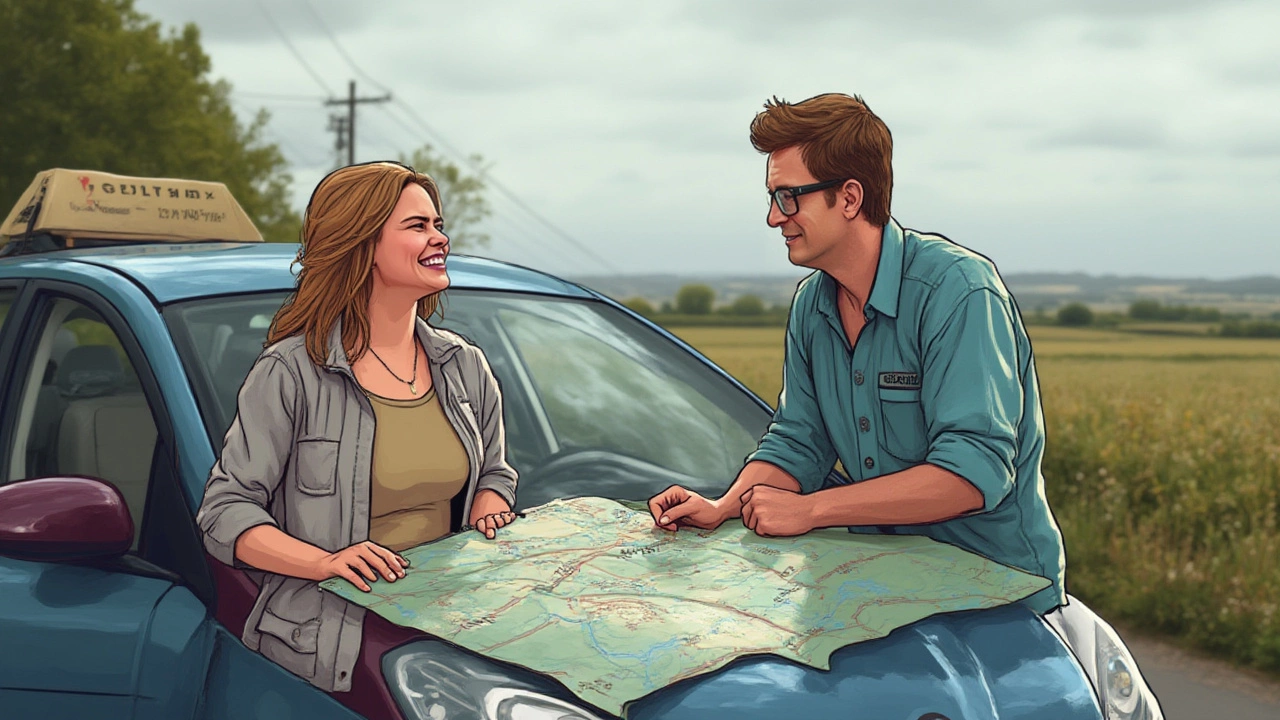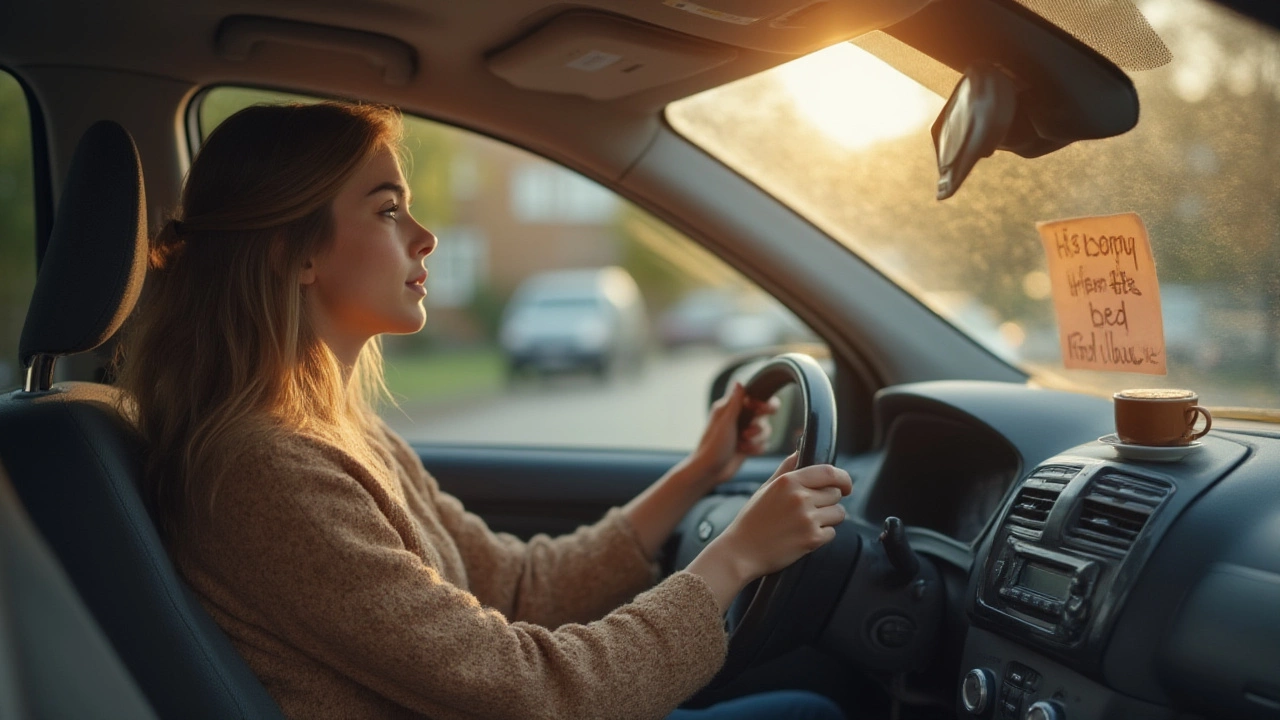I used to freeze up at the thought of slipping behind the wheel. Sweaty palms, a racing heart, playing out every worst-case scenario—if you’ve ever been there, you know how real driving anxiety can get. Everyone else seemed to think driving was as simple as turning the key. Not for me. I'd watch friends hop in their cars, sunglasses on, music up, acting like it's just another part of life. Meanwhile, I'd invent creative excuses to avoid even the shortest drive. Only after having my son Arlo nudge me (“Dad, can we go to the drive-thru?”) did I realise that letting fear call the shots wasn't an option anymore.
What Causes Driving Anxiety and How Common Is It?
There’s this idea that driving anxiety is rare, like a weird phobia only a few folks have. The truth? Surveys show nearly 1 in 5 drivers in the UK feel some level of fear or anxiety when they drive. Break it down, and you’ll see symptoms cropping up everywhere: sweaty hands on the wheel, avoiding roundabouts, tense shoulders, holding your breath at every junction. It gets worse after accidents or bad driving experiences (mine started after I clipped a wing mirror on a crowded street), but even new drivers with no negative history can find themselves spiralling from just the pressure of learning something new in public.
Losing confidence doesn’t always come from one big incident. Sometimes it's just hearing bad stories, being in busy cities, or having people in the car that makes you second-guess yourself. Studies from the Anxiety and Depression Association of America found women are more likely to talk openly about it, but men face it just as much and tend to bury it deeper. The pressure to “just get over it” makes it hard to reach out for help.
What matters most is recognising the anxiety and calling it out. Being honest about it—especially with people close to you—cuts the shame in half. I told Miranda after a particularly embarrassing panic at the traffic lights, and she didn’t roll her eyes. She just wanted to help. If you’re reading this, you’ve already taken the first step—admitting it out loud, even if just to yourself.
First Steps to Regain Control: My Personal Toolkit
I started by facing facts—I wasn’t going to wake up magically calm and unstoppable one day. So, I made a toolkit. The cornerstone was taking things slow. My first goal? Just sitting in the driver's seat for five minutes, no key in the ignition. I did that every night for a week. After that, I’d turn the car on, but just stay parked. Eventually, I’d roll down the driveway and right back up. Sounds basic, but believe me, it felt like Everest.
Once I built a little confidence, I wrote down every part of the drive I found scary—busy roundabouts, merging onto dual carriageways, reversing in narrow spaces. Breaking it into chunks made things less overwhelming. That’s when I found the “exposure ladder” approach. It’s a fancy term, but it means listing situations from least to most scary and tackling them in order, bit by bit.
Next, I leaned on tools that actually work when panic creeps in. Box breathing (in for 4, hold for 4, out for 4, hold for 4) gets me through red lights without feeling like I’m about to faint. Keeping a bottle of water in the car helps too—I read somewhere that just taking a sip and swallowing can shift your focus away from spiralling thoughts. Then there’s music. I made a playlist of upbeat songs, with no surprises or sudden tempo changes. Pro tip: avoid news or talk radio if you’re on edge.
If you get jammed up trying to focus on the road while your mind is racing, try narrating what you see out loud. “Red Mazda on my left. Turning at the roundabout. Traffic is slow. Brake lights ahead.” It sounds silly, but it helps ground your thoughts in the present moment rather than letting them run wild with 'what ifs.'

Getting Outside Help: Therapy, Courses, and Support Groups
After trying every self-help hack I could find, I realised driving anxiety isn’t just about logic. You can know every stat, pass every theory test, and still feel gripped by it. So, I reached out for outside help. There's no shame in it—think of it like hiring a coach if you want to run a marathon.
First, I joined a few local groups. Just hearing people talk about how they clipped parking posts or did three-point turns gone wrong made me feel less alone. Turns out, there are drivers everywhere who dread motorways, city centre streets, or just having an impatient driver behind them. Sharing stories makes you realise: the majority of drivers aren’t perfect either.
Then I tried working with a therapist who specialises in cognitive behavioural therapy (CBT) for driving anxiety. CBT isn’t about lying on a couch recounting your childhood—it's about practical ways to break the cycle of fear, thought by thought. I’d work on re-framing quick-trigger panic responses, practising relaxing my grip on the steering wheel, and mapping out backup plans for what I’d do if I started to panic mid-drive. The therapist recommended an app—‘Drive Calm’—which offers guided relaxations made just for drivers. I gave it a go and now I use it as a warm-up before longer journeys.
Other things I discovered:
- Refresher lessons with a calm, no-judgement instructor. Sometimes just having a pro in the passenger seat resets your whole attitude.
- Pass Plus or defensive driving courses—not just for insurance discounts, but for boosting real skills and confidence.
- Video tutorials breaking down complicated road layouts or motorway junctions so they’re less intimidating the next time you see them.
There's also hard data behind this. According to a study published by the British Journal of Clinical Psychology, drivers who used a combination of exposure therapy and CBT saw anxiety symptoms drop by around 40% within three months. Knowing what works, and that you’re not the first to face this, really matters.
Building Daily Habits to Stay Calm Behind the Wheel
Nothing beats consistency. I set myself tiny, automatic daily habits that made everything less hairy over time. Warm-up drives became a weekend ritual—I’d head out early, when the roads were empty, to explore parts of the city I’d usually avoid. The more often I did it, the less threatening it felt.
I also started prepping the car the night before. Remove clutter, wipe the windows, put in snacks for the kids. If the car feels tidy, you feel more in control. Planning routes ahead on Google Maps took some of the sting out of unexpected turns, and seeing the journey mapped out helped me feel prepared. If a route seemed overwhelming, I’d break it into sections—‘Just make it to the petrol station,’ then ‘Just reach the traffic lights’—instead of fixating on the whole drive.
Tracking progress turned out to be way more motivating than I expected. I bought a pack of cheap gold-star stickers (the same ones Arlo gets at school) and started giving myself one for every anxiety-free drive. Sounds childish? Yes. Did it help? Also yes.
I made family part of the process too. Miranda and the boys would do “car karaoke” with me on the motorway, turning nerves into family fun. If I got stuck in traffic, we’d try to spot funny license plates or count blue cars. Involving them not only lightened the mood, it gave the anxiety less power when I knew they were rooting for me.

Long-Term Confidence Boosts: Celebrating Wins and Staying Realistic
As time passed, driving became less about avoiding disasters and more about winning back my independence. I learned to celebrate silly small wins—reversing into a tight spot without stalling, or making it through a rainstorm home from the office. Real change doesn’t come from ignoring setbacks. I had bumpy days: a panic attack on the ring road, white-knuckled trips that still left me shaken, but I never reset to zero. Every drive counts. I kept a journal with notes, tracking what worked and what tripped me up. Over a few months, the good days started to outnumber the bad by miles.
Confidence is not about never being scared. It’s about feeling the jolt of fear and still choosing to keep going. Try to remember stats like this: the average British driver logs 10,000 miles a year, experiencing thousands of different conditions—yet actual accident rates are under 2%. That doesn’t mean there’s nothing to fear, but it shows that skill and familiarity really do make a difference. My brain slowly adjusted: what once set off sirens now just gets a raised eyebrow.
Little hacks helped, too:
- Keep a list of “safe” places to pull over if you do need to reset—park-and-rides, petrol stations, retail car parks.
- Know your car’s controls so you’re not floundering for the demisters or headlights under pressure.
- Pick one day a week to try a new driving challenge: nighttime driving, a new roundabout, the motorway to the next town.
Here’s a quick table showing some stats around common anxiety triggers and their frequency among UK drivers, which I found during my own research:
| Anxiety Trigger | Percentage of Drivers Affected (%) |
|---|---|
| Motorways | 62 |
| Bumper-to-bumper traffic | 54 |
| Reverse parking | 47 |
| Driving at night | 44 |
| Bad weather conditions | 39 |
Looking at that, it’s clear you’re not failing if these things make you nervous. You’re part of a massive club.
Now, months later, when Arlo pipes up with “Dad, can we go to the mountains this weekend?” I don’t pretend to check my emails to avoid the drive. Anxiety doesn’t run my show anymore. I know it nags in the background, but I also know I have what I need to get behind the wheel and roll on. If I can do it—believe me—so can you.

